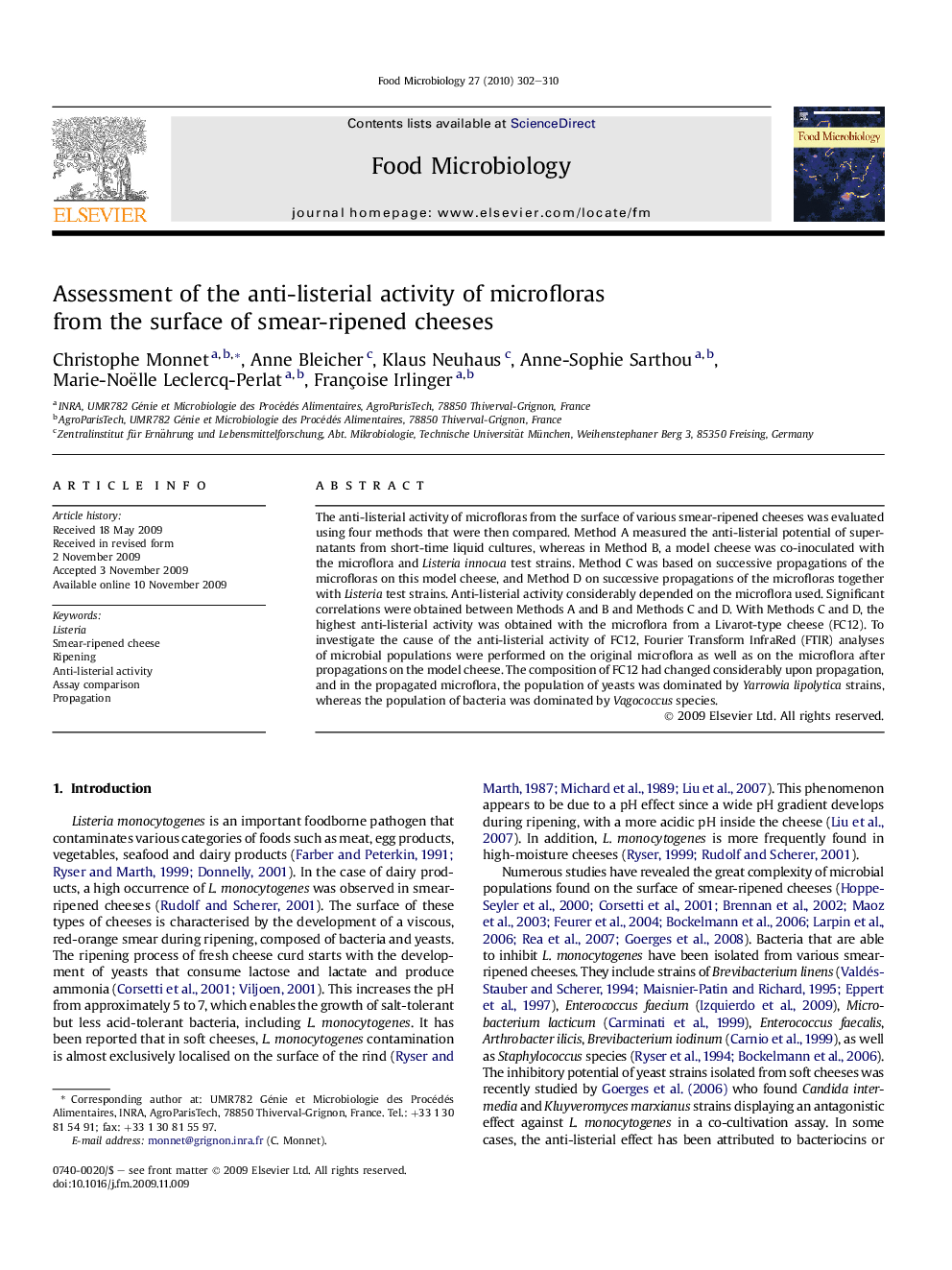| Article ID | Journal | Published Year | Pages | File Type |
|---|---|---|---|---|
| 4363551 | Food Microbiology | 2010 | 9 Pages |
The anti-listerial activity of microfloras from the surface of various smear-ripened cheeses was evaluated using four methods that were then compared. Method A measured the anti-listerial potential of supernatants from short-time liquid cultures, whereas in Method B, a model cheese was co-inoculated with the microflora and Listeria innocua test strains. Method C was based on successive propagations of the microfloras on this model cheese, and Method D on successive propagations of the microfloras together with Listeria test strains. Anti-listerial activity considerably depended on the microflora used. Significant correlations were obtained between Methods A and B and Methods C and D. With Methods C and D, the highest anti-listerial activity was obtained with the microflora from a Livarot-type cheese (FC12). To investigate the cause of the anti-listerial activity of FC12, Fourier Transform InfraRed (FTIR) analyses of microbial populations were performed on the original microflora as well as on the microflora after propagations on the model cheese. The composition of FC12 had changed considerably upon propagation, and in the propagated microflora, the population of yeasts was dominated by Yarrowia lipolytica strains, whereas the population of bacteria was dominated by Vagococcus species.
